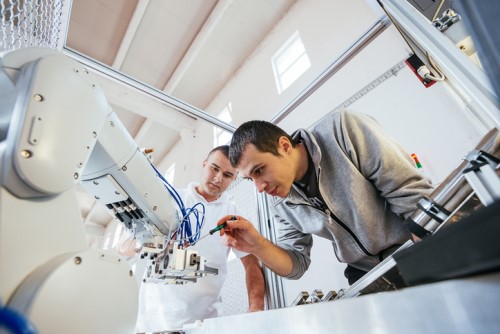
Workplace accidents aren't caused by too much intelligence but the lack of it. In fact, AI-powered 'cobots' may end up saving workers' lives

Long before the term robotic process automation became a buzzword in the era of AI, some industrial robots had already been working side by side with humans for more than half a century.
Case in point: robots of the automotive industry.
These machines, however, have a lot of catching up to do with their AI-powered siblings. With the rise of cognitive technology, so-called “dumb” machines will be booted out by smarter ones unless they adapt to the workplace of the future.
Industrial robots found in most factories today don’t always possess the intelligence to decipher what are routine tasks and what are extraordinary situations that endanger human life.
In short, under extreme circumstances, industrial robots have the potential to turn into a killing machine.
As tech startup Veo Robotics demonstrates, workplace accidents involving heavy machinery aren’t caused by too much intelligence being built into these machines – but by the lack of it.
Veo is hoping to build safer, more sophisticated robots that humans can stand close to and interact with even as the machines pummel away in their task.
The Massachusetts-based company’s collaborative robots – or ‘cobots’ – aim to minimize the risk of workplace accidents by giving machines the ability to ‘see’ the space they are working in.
For example, when a human worker comes close to a cobot speeding through a task, the machine senses the person, slows down, and eventually comes to a complete stop. Once the person walks away, the robot picks up speed again and returns to its task.
The intelligence that powers Veo’s cobots uses object recognition. The machine is fitted with 3D sensors to create a spatial representation through a software.
The machine knows when people are close by, how fast surrounding objects are moving, and where they are headed.
“If you build in human interactivity from the beginning, it’s safer than putting up all the fences and gates in the world,” Patrick Sobalvarro, Veo’s founder, told TechCrunch.
As cobots become the new breed of industrial machinery, Veo hopes to open its technology across industries.
“We respect the investment companies have made,” Sobalvarro said. “These things are gorgeous, they last a hundred thousand hours and have tolerances of a fraction of a millimeter. We love these machines, and our model is to work with all of them.”
HR Tech News is asking HR professionals to share insight into the key issues relating to HR technology. What area of HR technology do you find most complex, challenging or interesting? Have your say here.